When investing, one of the fundamental concepts that every investor must understand is the relationship between risk and return. Investing involves inherent uncertainty and the possibility of experiencing both profits and losses. As a result, it is essential to grasp the concept of risk and return to make well-informed investment choices.
Investment risk encompasses the potential for experiencing financial losses due to various factors. These factors can include market volatility, economic fluctuations, and changes in industry trends, political instability, or company-specific risks. Investments with higher levels of risk typically offer greater potential for both increased gains and more significant losses.
Conversely, return pertains to the gains or losses derived from an investment and serves as the compensation investors receive for assuming investment risk. Returns can come in the form of capital appreciation, such as an increase in the value of stocks or real estate, or through income generated from dividends, interest, or rental payments. Investors generally expect compensation for taking on greater risk with the potential for higher returns.
The risk and return relationship can be summarized by the principle of "higher risk, higher return." Investments with the potential for substantial profits are typically associated with increased levels of risk. For example, investing in emerging markets or individual stocks of small companies can offer substantial returns. Still, they also carry higher risks due to their inherent volatility and lack of market stability.
Conversely, investments that are considered safer, such as government bonds or blue-chip stocks, tend to offer lower returns. These investments are associated with lower risk levels, making them more suitable for conservative investors seeking stable and consistent income streams rather than aggressive growth.
Investing is a fundamental aspect of building wealth and achieving financial goals. However, it comes with inherent risks and rewards. To make informed investment decisions, individuals must comprehend the concepts of risk and return. By understanding the learning objectives associated with investment risk and return, investors can develop a solid foundation for successful investment strategies.
Other than earning a regular income in the form of wages and salaries, one of the most common sources of generating income is investing a part of the steady income in the stock market. Investment refers to acquiring assets to increase their value over time. When a person acquires a good as an investment, the object is not to consume it but to use the good to generate more wealth. In investment, there is some outlay today in the form of time, money, and energy in anticipation of a greater future payoff than the initial outlay.
For example, an investor put $100 today in anticipation of generating $125 by year-end. If the asset's value worth $100 increases, the investor makes a profit. On the flip side, the investor can also make losses if the asset’s value goes down. Hence, in investment, there is always a risk involved. Depending on the level of risk, there is a corresponding return as well.
Investors can invest money in three ways. They can lend money to someone (business or government) on interest. Investors also invest in the form of shares. With this, they become a part-owners of a business. The third is real estate, where investors buy the asset, and its value grows over time.
Objectives of investment:
Investment helps to bridge the gap between one’s dream and reality. Through investment, investors can reach financial goals, beat inflation and earn significant returns. Let us understand each point one by one.
Different types of investment:
Investment can intimidate a lot of people as there are different options available that fit the portfolio. This section will discuss the ten most common investment types and how they work.
Some Investment options in Australia:
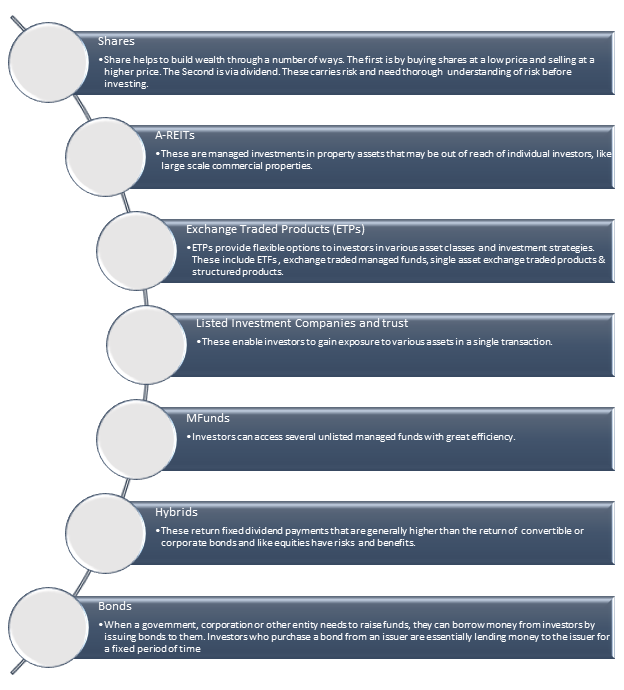
All investment involves some degree of risk. In finance, risk refers to the level of uncertainty or possible financial loss inherent in an investment decision. In general, the higher an investment risk, investors seek higher returns to compensate themselves for taking such risks. Every saving or investment product available in the market involves different levels of risk and return. Different levels of risk and return depend on how readily investors can get their money when needed, how quickly the money will grow, and how safe it is. Below is the list of risks investors face.
Business risk is the risk linked with running a business. The risk can be higher or lower from time to time. But it will be there as long as the business exists or wants to operate and expand. There are several factors that can influence business risk. Some of the business risks include strategic risk, operational risk, reputational risk, compliance risk, legal risk, security risk, financial risk, competition risk, physical risk, etc.
Now, the question comes how to identify this risk. Below are the steps one can take to identify the risk.
Once risks are identified, investors can follow the below strategies to lessen them.
Volatility is a statistical measure to measure the dispersion of returns for a security or market index. In many cases, the higher the volatility, the higher the risk.
Volatility is measured using standard deviation and variance between returns from the same security or market index. Often volatility is linked with big swings in either direction.
Inflation Risk refers to how the prices of goods and services increase more than expected. Contrarywise, such a situation results in the same amount of money, resulting in less purchasing power. Inflation Risk is also known as Purchasing Power Risk.
In inflationary risk, inflation will weaken an investment’s returns through a decline in purchasing power. During the inflation period, the profit and growth of the business is also impacted which in turn impacts investor confidence and impacts the willingness to take risk by holding stocks.
Interest rate risk is the likelihood of a weakening in the value of an asset resulting from unforeseen fluctuations in interest rates. Interest rate risk is mostly associated with fixed-income assets like bonds rather than equity investments. The interest rate is one of the primary drivers of a bond’s price.
The interest rate is inversely proportional to the security price. As interest rates rise, security prices fall for fixed-income securities because when interest rates increase, the opportunity cost of holding those bonds increases, i.e., the cost of missing out on an even better investment is more.
Liquidity Risk
Liquidity risk is defined as the risk of incurring losses resulting from the inability to meet payment obligations in a timely manner when they become due or from being unable to do so at a sustainable cost.
For financial markets, liquidity signifies how easily an asset can be traded. Brokers often aim to have high liquidity as this allows their clients to buy or sell underlying securities without having to worry about whether that security is available for sale.
Risk Tolerance
Risk tolerance refers to the degree or the level of risk an investor can or is willing to take, considering the volatility of the investment. Risk tolerance determines the type and amount of investments that an individual chooses. Every investment has some or the other risks. By knowing their risk tolerance, investors can plan their portfolios and decide how to invest. Based on the level of risk an investor can tolerate, the investor can be categorized as aggressive, moderate, or conservative. Various factors influence risk tolerance. These are time, financial goal, age, size of the portfolio, and comfort level. Let’s discuss them one by one:
Considering the factors impacting risk tolerance, let’s discuss the level of risk tolerance.
These moderate-risk investors’ portfolios are a mixture of risky and less risky securities. Risky securities include stocks and derivates; less risky securities include bonds and debenture.
These investors prefer investing in assets that are highly liquid and are guaranteed. Risk-averse individuals commonly opt for bank term deposits, money market instruments, Treasury bills, etc.
The risk-return trade-off is an investment principle that indicates that the higher the risk, the higher the reward. As per the risk-return trade-off, an investor can make a huge profit if the person can accept a higher probability of losses. The appropriate risk-return trade-off depends on several factors like risk tolerance, age, retirement duration of the investor, etc.
The concept of risk-return in finance refers to the analysis of the likelihood of challenges involved in investing and, at the same time, assessing the return from the same investment.
However, one should also remember that it is not necessary that higher risk will definitely give higher returns and always generate higher revenue. It could be either loss or gain. This concept is quite popular among investors as a technique for choosing any particular investment option. Those investors who invest on a massive scale study the risk and the corresponding return and then accordingly make a decision.
On that note, let’s start the concept with an example.
Example of risk-return trade-off:
Suppose there is an investor, who is deciding whether to invest or not. The investor wants to balance the chance of losses against the possible gain. Let’s say if the investor puts all the money in the savings account, then the gain would be in the form of the interest rate paid by the bank. On the other hand, if the investor invests this money in purchasing stocks of any particular company, then there is a huge possibility of losing the money. At the same time, there are chances of gaining huge as well compared to the return the investor might make while keeping the money in a savings account. This is the trade-off that the investor will have to make in choosing to be open to risk to achieve a bigger gain.
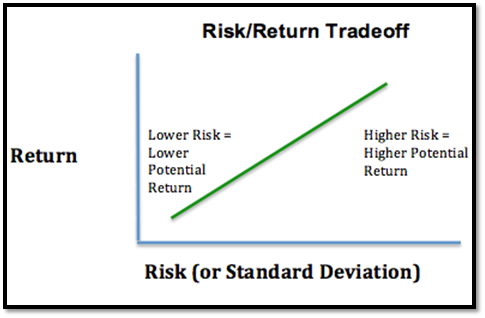
Based on their risk appetite, investors have different investment choices. The Risk-Return Indifference Curve plots different combinations of risk and return pairs. For analysis of the choice of a portfolio of assets by individuals or firms, this explains the concept represented by this curve.
Investors generally select a stock that offers maximum return at optimum risk. However, the choice of security, whether risky or non-risky, will depend on the attitude of the investor.
Some investors are risk averse, and they do not want to take risks and follow the safe path. They try to avoid high-risky assets and go for less-risky assets. In this case, the Risk-Return Indifference Curve will be positively sloped. On the other hand, some investors are ready to take huge risks. In this case, the Risk-Return Indifference Curve will be positively sloped and will be convex. In the case of risk-neutral investors, the Risk-Return Indifference Curve will be a horizontal shape. Let’s understand this with an example.
Risk-Neutral Investor:
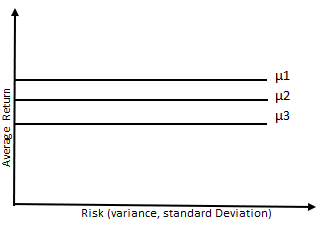
Risk Averse Investor:

Investor with high risk-taking potential:
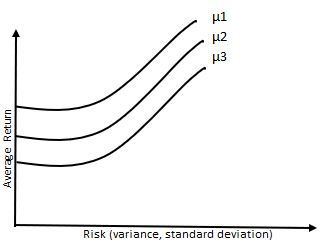
In case of an emergency, there is a high chance that the investor holding risky assets may experience huge losses on the principal amount. The value of the risk showcases the level of risk taken by the investor. When investors own a high-value investment, their risk-bearing increases and vice-versa. In that case, if the investor holds risky securities/assets, they may not go for more risky assets. On the flip side, if the investor owns less risky investments, they may opt for high-risk assets.
In the world of finance, the risk-return concept is a fundamental principle that investors use to evaluate investment opportunities. The risk-return concept suggests that there is a relationship between returns and risk in investments. It is important for investors to understand and carefully manage the risk-return tradeoff to make informed decisions and maximize the performance of their investment portfolios.
Standard deviation is one of the most common ways to determine risk, as it helps to determine market volatility. In simple terms, Standard deviation helps to determine the spread of the asset prices from their mean prices. So, if the standard deviation value is very high, the asset tends to be highly risky and vice versa. If the asset has a low standard deviation, we say that the asset has low risk, i.e., the asset’s price will be calm. On that note, let’s start this topic by defining standard deviation.
Definition:
Standard deviation can be defined as a statistical tool to measure the dispersion of a data set relative to its mean. It is calculated as the square root of variance by determining each data point’s deviation compared to its mean.
Calculation:
Standard Deviation = i-1n(x-x)2n-1
xi = Value of ith point in the data set.
x = Mean value of data set
n= number of data points in a data set.
Steps to calculate Standard Deviation:
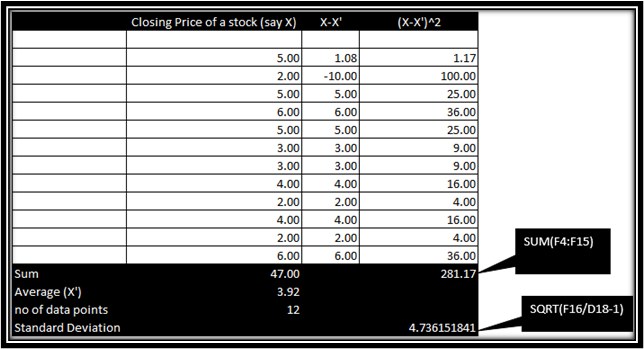
Application of standard deviation:
In the world of the stock market, standard deviation has a key role to play. It is a useful tool in investing and trading strategies as it helps measure market and security volatility as well as predict performance trends. This tool is used by analysts, portfolio managers, and advisors. A larger dispersion shows how much the return on the fund in deviating from the normal return.
If the stock trades near the narrow trade range, the standard deviation will return a low value. Thus, it indicates low volatility. On the other hand, if the deviation is huge, it means the stock is highly volatile and is risky.
Variance
Investing is a crucial aspect of financial planning, allowing individuals and organizations to grow their wealth over time. However, investing is not without its risks. The variance of investment risk and return plays a fundamental role in determining the potential gains or losses associated with different investment opportunities.
Variance, in the context of investments, refers to the statistical measure that quantifies the dispersion or spread of investment returns around their average or expected value. It provides valuable insights into the potential fluctuations in investment performance and is a key parameter used to gauge risk.
Another useful tool is the Sharpe ratio, which incorporates both the variance of returns and the risk-free rate of return. It quantifies the excess return earned per unit of risk taken, providing a valuable metric for comparing investment opportunities.
Co-relation is the statistical measure that expresses the extent to which two variables are related to each other. This helps to identify the relationship between the two variables without making any statement related to cause and effect.
Stock co-relation describes the relationship between two stocks and their respective price movements. It can also refer to the relationship between stocks and other asset classes, such as bonds or real estate.
In simple terms, stock co-relation tells us how stocks move in relation to one another. Stock co-relation could be positive as well as negative. A positive co-relation means that two stocks either increase or decrease in the same direction. If the stocks are negatively co-related, it means that one stock is increasing and the other is decreasing. Other than positive or negative co-relation, the third co-relation is no co-relation. In no co-relation, the stocks behave very differently and have no linear relationship.
Diagrammatical representation:
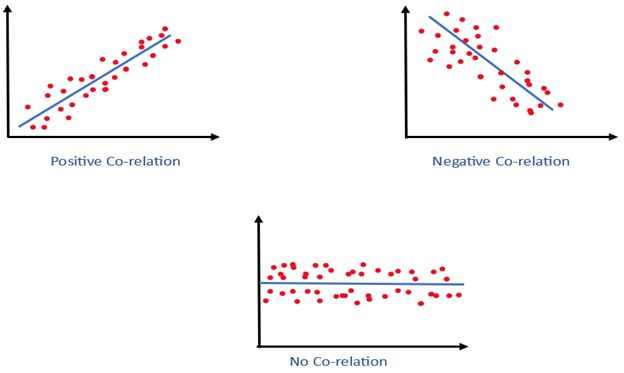
The formula for calculating the co-relation coefficient (r) between two sets of data (x and y) is:
r=(nxy-xy)[(nx2 -(x)2) X (ny2 -(y)2)]
Where:
n is the number of pairs of data
Σxy is the sum of the products of corresponding values of x and y
Σx is the sum of the values of x
Σy is the sum of the values of y
Σx2 is the sum of the squares of the values of x
Σy2 is the sum of the squares of the values of y
This formula is known as the Pearson co-relation coefficient, which measures the linear relationship between two variables.
To calculate the co-relation between two stocks, you can follow these steps:
Keep in mind that co-relation does not necessarily imply causation. A high co-relation between two stocks does not necessarily mean that one stock causes the other to move, as other factors may affect both stocks.
To calculate the co-relation between two stocks in Excel, you can follow these steps:
Note that co-relation does not imply causation, and it's important to consider other factors that may affect the movements of the two stocks. Additionally, co-relation coefficients are sensitive to outliers and may not accurately reflect the true relationship between the two stocks if there are extreme values in the data.
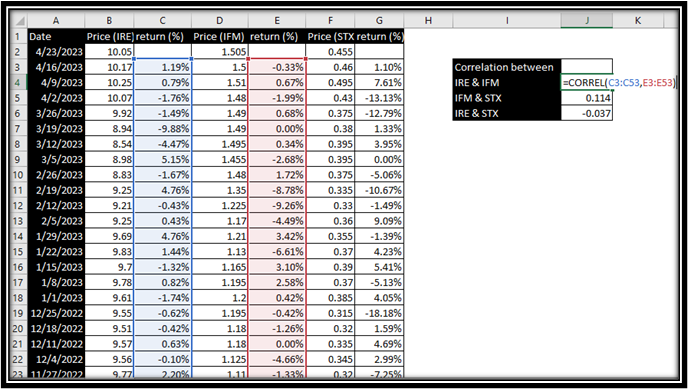
Nextgen Global Services Pty Ltd trading as Kapitales Research (ABN 89 652 632 561) is a Corporate Authorised Representative (CAR No. 1293674) of Enva Australia Pty Ltd (AFSL 424494). The information contained in this website is general information only. Any advice is general advice only. No consideration has been given or will be given to the individual investment objectives, financial situation or needs of any particular person. The decision to invest or trade and the method selected is a personal decision and involves an inherent level of risk, and you must undertake your own investigations and obtain your own advice regarding the suitability of this product for your circumstances. Please be aware that all trading activity is subject to both profit & loss and may not be suitable for you. The past performance of this product is not and should not be taken as an indication of future performance.